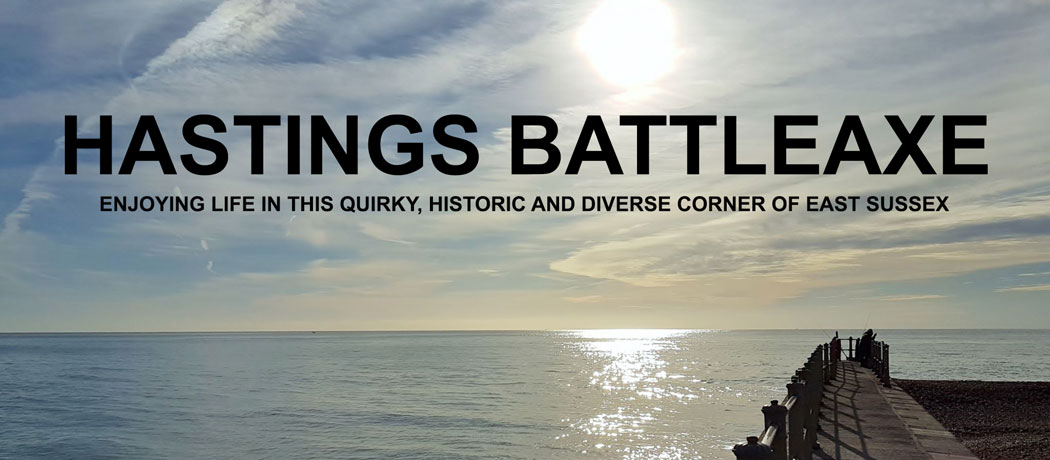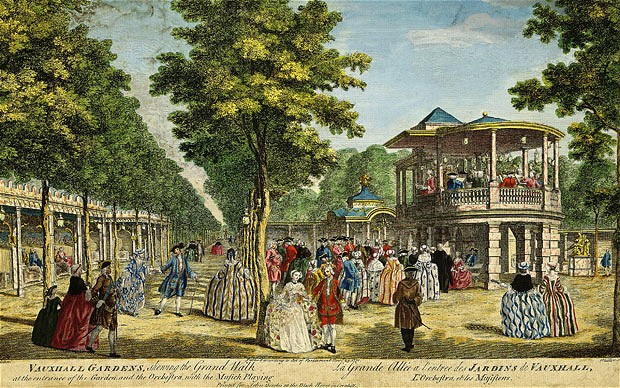The last post, about our walk to the Country Park, proved to be extraordinarily popular – in less than one week it has rocketed to be one of the most viewed Battleaxe posts ever. I don’t really know why. However, that being so, I thought I’d do a very quick up-date about the whereabouts of the mysterious Clive Vale Temperance Tea and Pleasure Gardens in the 1870s.
 |
| Was the Tea Garden near the footpath? |
How could an area big enough to enable several hundred people to enjoy dances have been in Pinder’s Shaw, a steep and inaccessible area of woodland on the side of the East Hill? Here’s the relevant extract from the Hastings Chronicle (that date must be wrong, too).
‘1880 May – The new Harold Tea and Pleasure Gardens
opened. They were at Pinders Shaw, on the east side of the upper Clive
Vale valley. They were built by Mr W Rogers, who had a large temperance
hotel. There was a big dancing area at the west end of the gardens,
capable of holding several hundred people. The nearest pub was a mile
away.’
People on Facebook wondered if the Garden could have been near the old house at the top of the step-steeped footpath leading from Harold Road to what is now the Shearbarn camp site. However, the house does not appear until the 1899 map below…. too late for our gardens.
However, a visit to the History House in Courthouse Street threw light on the mystery. The Temperance Tea and Pleasure Gardens were at the bottom of what is now the unmade section of Harold Road, running down to the Bourne Stream beside what is now New Road. The ground is still sloping here, but not as steep, and presumably, the gardens must have been terraced.
Now, houses cover the front part of what were the old Pleasure Gardens, and the side adjoining New Road is protected by a thick hedge – it is hard to see the lie of the land.
This map, from the 1870, does not show the gardens marked as such, but we now know that Mr W R Rogers ran Pleasure Gardens at the site marked Home Cottage. It is clear to see how they must have been laid out, with blocked areas of grass surrounded by shrubbery.
Pleasure Gardens like this were immensely popular during Georgian and Victorian times. They were popular by day – attended by the genteel (and in the case of Clive Vale), the sober, for tea, dancing, musical entertainment and masquerades At night they were magical and romantic places, lit by coloured lamps, but often attracted more dubious customers. We know nothing about Clive Vale, but here are a couple of images of the most famous Pleasure Gardens, Vauxhall Gardens in London, which acted as the model for many of the others.
However, it is likely that the Harold Tea and Pleasure Gardens did not last long. This map, from 1899, shows no trace of the former tree-bounded grid pattern – it appears to be just blank land. What happened? We do know that in 1879 and in 1880 Mr Rogers applied for a license for the gardens, which was refused.
Maybe there were not enough sober-minded people in Hastings to keep the gardens going? Things don’t change much…
That’s all for now – this coming week is Grand Daughter week. We have exciting adventures planned…..
NOTE – THIS POST HAS NOW BEEN CORRECTED. See here.





Comments from Google+